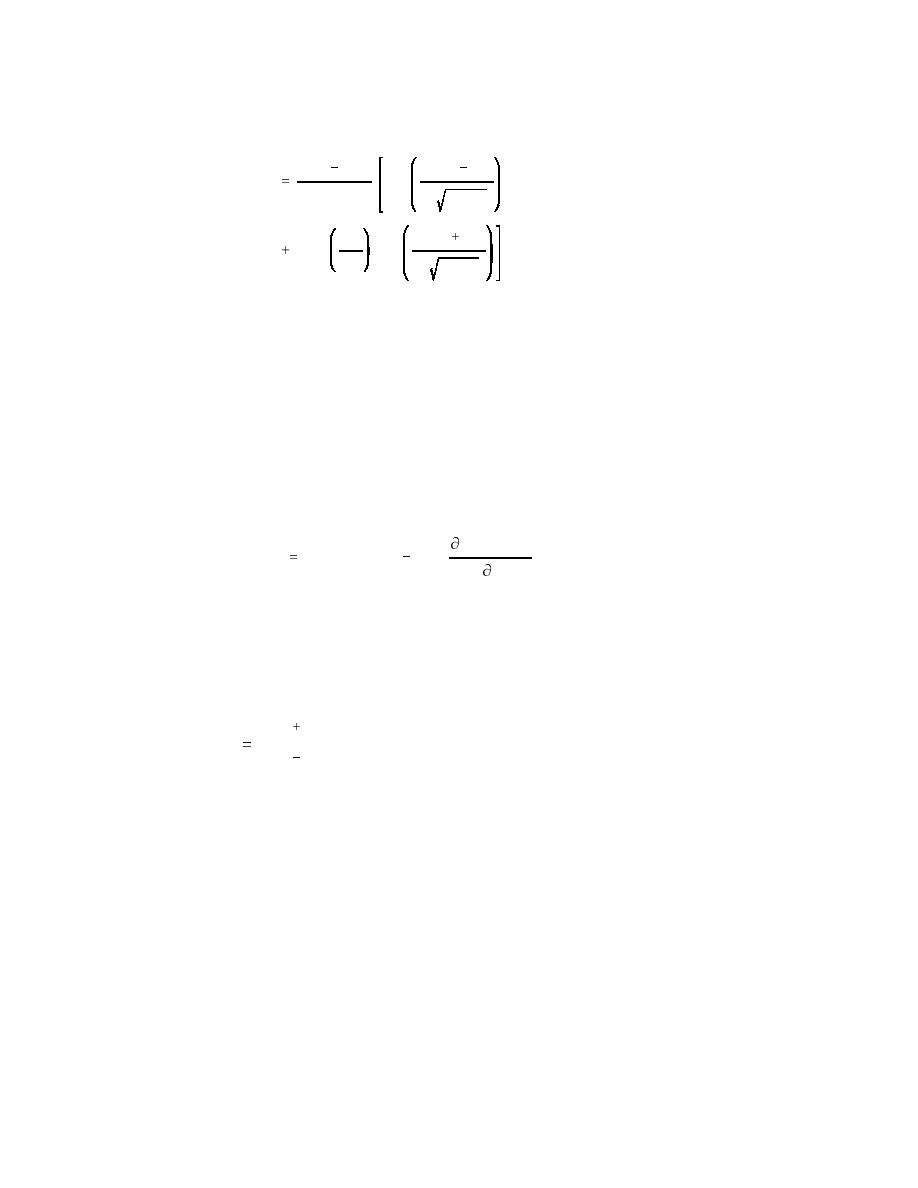 |
||
|
|
||
|
Page Title:
Models for More General Cases: Numerical Solutions |
||
| |||||||||||||||
|
|
 The solution to Equation B27 subject to the infinite cap condition in homo-
geneous sediment is given by
Cw)
(C0
Rf z
Ut
Cpw(z,t)
erfc
2
2 Rf D t
(B32)
R z Ut
Uz
erfc f
exp
D
2 Rf D t
Here erfc represents the complementary error function that is given by 1 - erf, the
error function. The error function is a tabulated function (e.g., Thibodeaux
1996) and is commonly available in spreadsheets and computer languages. It
ranges from 0 at a value of the argument equal to zero to 1 at a value of the argu-
ment equal to infinity. The model is most useful in predicting the penetration of
the contaminant into the cap and the time until the sediment-water interface
begins to be significantly influenced by the cap, i.e., the breakthrough time. The
determining the time required until Cpw(Leff ,t) is equal to some fixed fraction of
the concentration in the underlying sediment; for example, until Cpw(Leff ,t) =
computing
Cpw(Leff , t)
F (Leff , t)
U Cpw(Leff , t)
Deff
(B33)
z
Note that Equations B32 and B33 can also be applied to conditions of mild ero-
sion or deposition on the cap. Erosion or deposition give rise to an effective
velocity directed downward with deposition and upward with erosion. Because
erosion buries or uncovers sediment and its associated contaminants, the effec-
tive velocity influencing the pore water concentration is the erosion or deposi-
tion velocity multiplied by the retardation factor.
Uerosion Rf
Erosion
Upw
U
(B34)
Udeposition Rf
Upw
Deposition
That is, sediment burial or deposition gives rise to a rapid burial or exposure of
contaminants as a result of the sorbed load on the sediment particles.
Models for More General Cases: Numerical
Solutions
All of the models discussed thus far assume that the concentration in the
sediment remains unchanged despite the loss of contaminant to the overlying
water. This simplification is necessary to apply the presented analytical solu-
tions but leads to overly conservative results. For example, in an advective
dominated system, Equation B29 will describe the flux to the overlying water at
long time only if depletion is not accounted for. It should be emphasized that the
B16
Appendix B Model for Chemical Containment by a Cap
|
|
Privacy Statement - Press Release - Copyright Information. - Contact Us - Support Integrated Publishing |